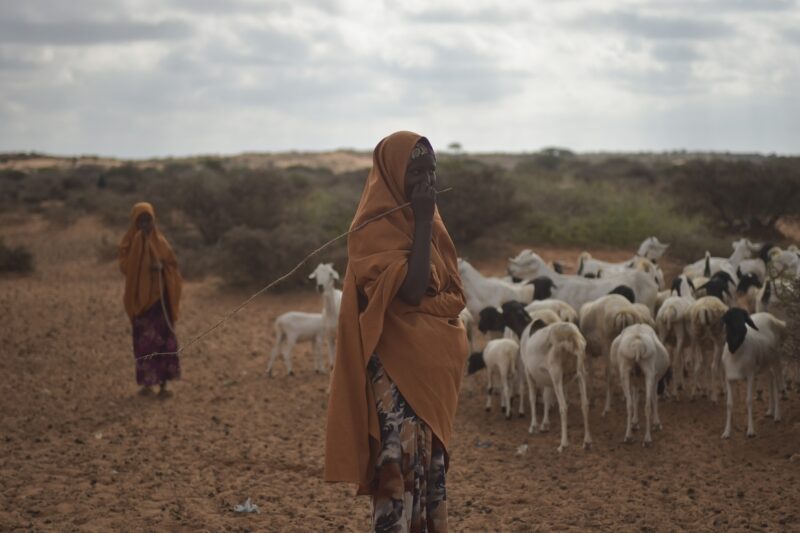COP28: social and economic metrics could serve as stepping stone for Global Goal on Adaptation
Emily Theokritoff, Marina Andrijevic, Carl-Friedrich Schleussner
As work on shaping the Global Goal on Adaptation culminates this week at COP28, we explore if social and economic metrics could be used as proxies for a country’s ability to adapt.
Share

Two years’ work shaping the Global Goal on Adaptation culminates this week at COP28. The new Goal is urgently needed to create momentum globally, yet adaptation is hard to track as it looks different everywhere you go. Social and economic metrics could shed new light on a country’s ability to adapt and unlock much needed finance.
Adaptation to climate change is urgently needed around the world, yet adaptation finance needs are 10–18 times greater than current adaptation finance flows. Many aspects of adaptation are context specific and there are a lot of complexities in assessing its effectiveness.
But with a growing need to track adaptation progress and increase financial flows in this field, it is essential to agree on globally applicable metrics and targets to ensure that finance gets to where it is most needed. One such metric could assess the adaptive capacity of regions and countries to carry out adaptation actions.
The Paris Agreement states that the Global Goal should enhance adaptive capacity, strengthen resilience and reduce vulnerability to climate change, with a ‘view to contributing to sustainable development and ensuring an adequate response in the context of the temperature goal’.
In other words, we need to work towards improving the ability of peoples or systems to adjust to climate change, which is strongly linked to enablers of and constraints to adaptation. Therefore, evidence of adaptation constraints can be used as a proxy for a country’s adaptive capacity.
A long shot to overcoming adaptation constraints
In our new study, we compare national studies on adaptation constraints (from the Global Adaptation Mapping Initiative) with global socioeconomic indicators for 83 countries and find clear links between adaptation constraints and socio-economic factors.
Unsurprisingly, we find that the better countries score across key dimensions including GDP per capita, institutional capacity, levels of education and gender equality, the lower the constraint levels. Based on this combination of “bottom-up” national evidence with different socio-economic indicators, we can actually establish benchmarks across these dimensions of adaptive capacity.
Taking this one step further, we looked at how long countries might take to overcome constraints to adaptation based on scenarios of socioeconomic development over the 21st century . Our projections are based on Shared-Socioeconomic Pathways (SSPs) - a set of future scenarios for global development which are widely used in climate science and IPCC reports.
We find that substantial improvements in adaptive capacity, especially in low- and middle-income countries, are possible already in this critical decade. This is a clear call to action. But closing the gap will take time - and this is something we can quantify.
Even in the most optimistic scenario (SSP1: the ‘sustainability’ scenario, characterised by low challenges in adaptation and mitigation and rapid and inclusive development respecting environmental boundaries), it will take until well after 2050 to overcome key constraints, such as financial and institutional hurdles, but also gender inequalities globally.
In a scenario following current trends (SSP2: the ‘middle of the road’ scenario, in which social, economic and technological trends do not change markedly from historical patterns), adaptation constraints might not be overcome this century. This highlights the need for targeted financial support, because a business as usual approach will not be enough.
Towards benchmarks for adaptive capacity
These timescales for overcoming constraints and strengthening adaptive capacity heighten the urgency of the climate crisis and the need for improved adaptation to reduce the risks of reaching hard limits and further loss and damage.
The future scenarios we looked at don’t consider escalating climate impacts, and their impact on socio-economic development meaning that all of them could nevertheless be still way too optimistic.
Grounding indicators of adaptive capacity in empirical research allows us to set benchmarks for socioeconomic development over time. The scenario framework we use is designed to explore the range of possibilities for improvements, or trajectories that exacerbate existing constraints, for key dimensions of adaptive capacity for 2030 and 2040 and beyond.
Within the limits of our analysis, our results indicate that very high constraints to adaptation could be overcome globally by mid-century. A full set of available indicators and their projections over the 21st century is available in another recent study and can be explored through an online tool.
Clearly, there is more to the adaptive capacity of societies and peoples than can be reflected in the national level socio-economic indicators we use, and the non-availability of data for some countries is an issue. Yet for now, they could be one of the many stepping stones towards an operationalised Global Goal on Adaptation.












